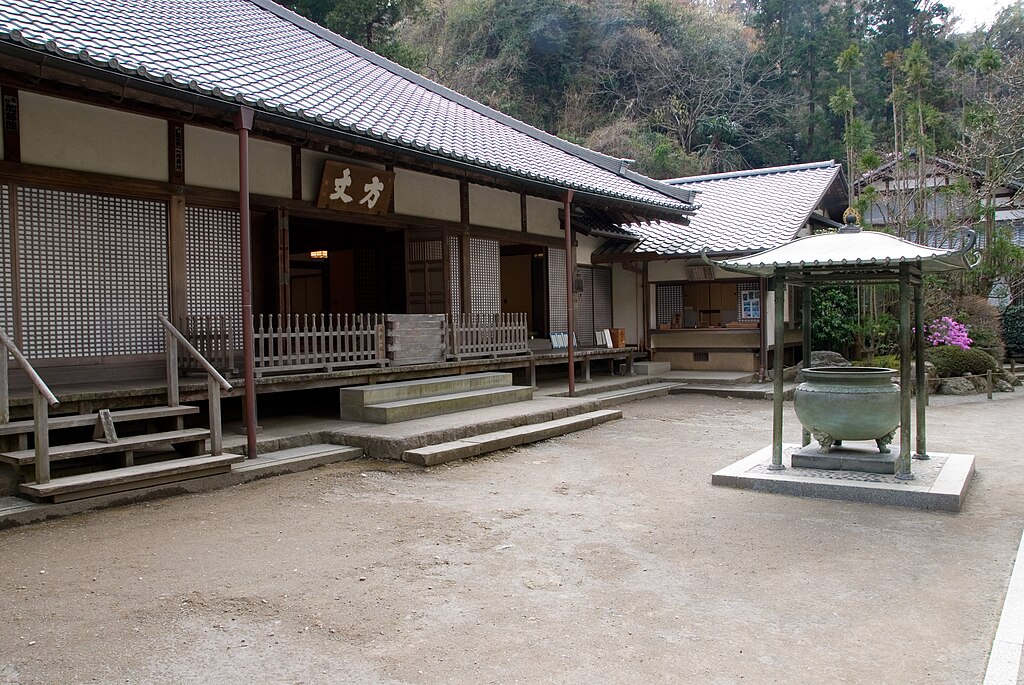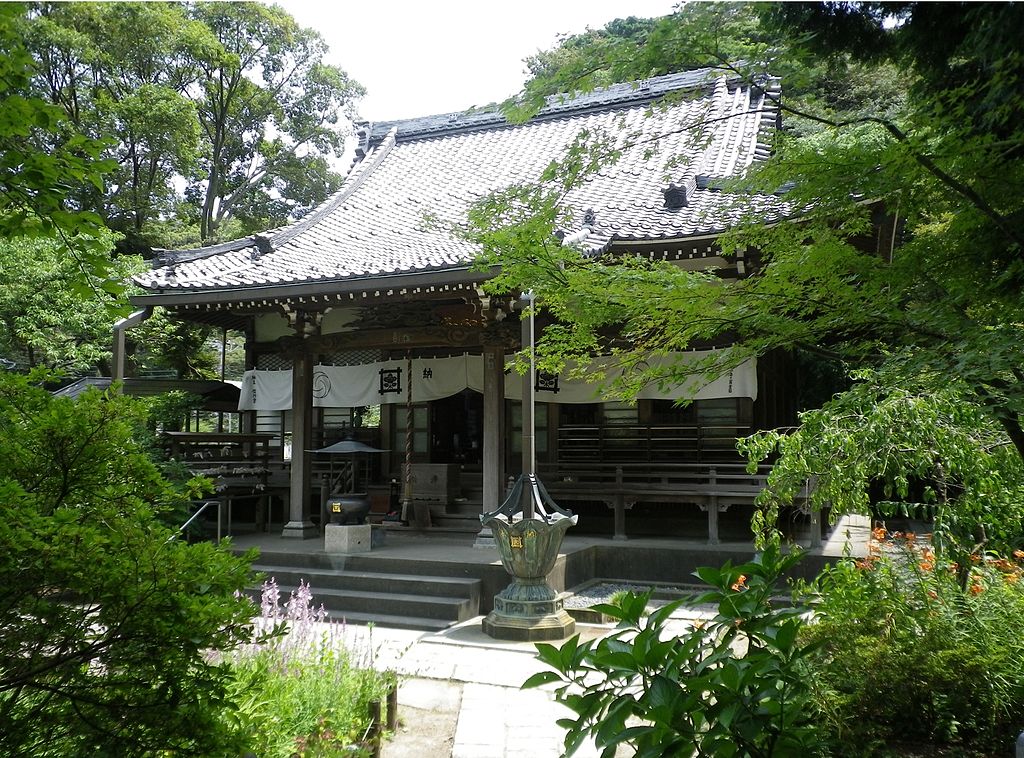What to do in Kamakura
Kamakura is famous for its countless temples and shrines. Don’t miss the big Buddha (Daibutsu), the beaches and walks in the surrounding forests.

Photo by Japanforeveryone.com
The Daibutsu, or Great Buddha, is one of Japan’s most iconic and spiritual attractions. Located at the Kotokuin temple in the city of Kamakura, the Daibutsu is a majestic 13.35 metre high bronze statue dating back to 1252. The seated Buddha embodies serenity and wisdom, and attracts visitors from all over the world. The Kotokuin temple, which surrounds the statue, provides a scenic backdrop for the Daibutsu, with beautiful gardens and ancient buildings. Visiting the Great Buddha and Kotokuin Temple is an experience of deep spirituality and a way to immerse oneself in Japanese history and culture.
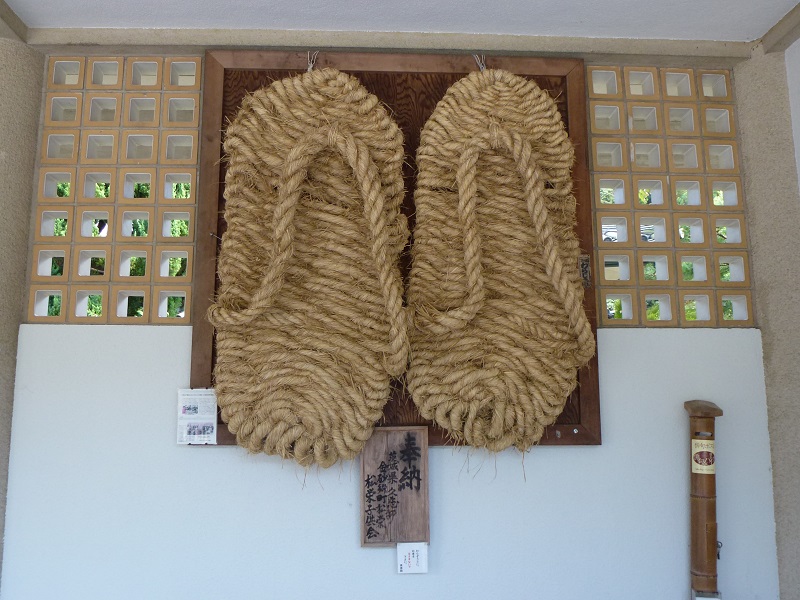
Photo by Japanforeveryone.com
Practical information
| View location on Google Maps | |
| Official website |
|
| Kotokuin Temple | |
| 8:00-17:30 (until 17:00 from October to March) | |
| No closing days | |
| 300 Yen | |
| Interior of the statue | |
| 8:00-16:30 | |
| No closing days | |
| 50 Yen | |
| From JR Kamakura Station, take the Enoshima Electric Railways train to Hase Station (5 minutes). From here go north for 5 minutes From JR train station, walk south and then immediately west to Hase station, from here go north. In total it takes about 30 minutes |
Hasedera is a Japanese temple located in the city of Kamakura, famous for its beautiful architecture and beautiful gardens. The temple is dedicated to the goddess of mercy and compassion, and houses numerous statues and paintings of Kannon, the Japanese goddess of mercy. One of Hasedera’s greatest treasures is a 9.18 metre high gilded wooden statue of Kannon, made in 721. The temple also offers a magnificent view of the sea and the city of Kamakura. Hasedera is an ideal destination for those seeking a spiritual break from the hectic Japanese city life.
Junichi, CC BY-SA 3.0, via Wikimedia Commons
Practical information
| View location on Google Maps | |
| Official website |
|
| 8:00-17:30 (until 17:00 from October to February) Museum closes at 16:30 Last admission 30 minutes before closing |
|
| No closing days The museum is closed on Thursdays (except if Thursday is a public holiday) |
|
| 400 Yen (additional 300 Yen for the museum inside the temple) | |
| From JR Kamakura Station, take the Enoshima Electric Railways train to Hase Station (5 minutes). From here go north for 5 minutes From JR train station, walk south and then immediately west to Hase station, from here go north. In total it takes about 30 minutes |
Tsurugaoka Hachimangu is one of the most important and visited shrines in Kamakura, a historical city in Japan. Founded in 1063, the shrine is dedicated to Hachiman, god of war and prosperity. Its location on a hill offers a panoramic view of the city and the ocean. Visitors can walk across the beautiful vermelho bridge and up the steps of the long main avenue to reach the main sanctuary. Here one can observe ceremonies and practise local traditions. Tsurugaoka Hachimangu is a place of great historical and spiritual importance, not to be missed during a visit to Kamakura.
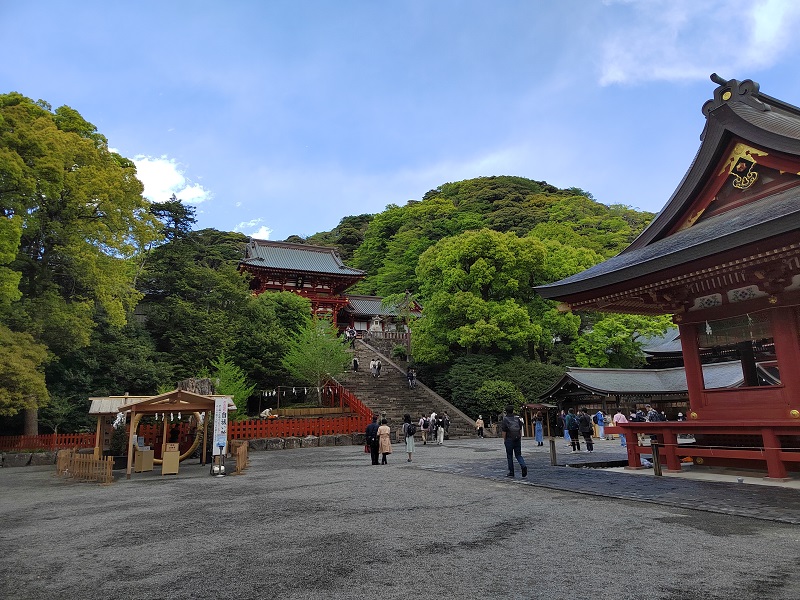
Photo by Japanforeveryone.com
Practical information
| View location on Google Maps | |
| Official website |
|
| 5:00-21:00(6:00 from October to March) Last entry 30 minutes before closing Open 24 hours from 1 to 3 January |
|
| No closing days | |
| Free (200 Yen for entrance to the shrine museum) | |
| From JR Kamakura station walk north-east along the shopping street or along the main street |
Engakuji is one of Kamakura’s main Zen temples, located at the foot of Mount Kita-Kamakura. Founded in 1282, the temple is renowned for its beautiful garden, traditional architecture and serenity. Visitors can admire the majestic main gate, the great Buddha Hall and various other sacred structures. The temple is also a place of study and practice of Zen Buddhism and hosts regular meditations and retreats. Engakuji is an oasis of peace and tranquillity, a perfect place for reflection and meditation away from the hustle and bustle of everyday life.
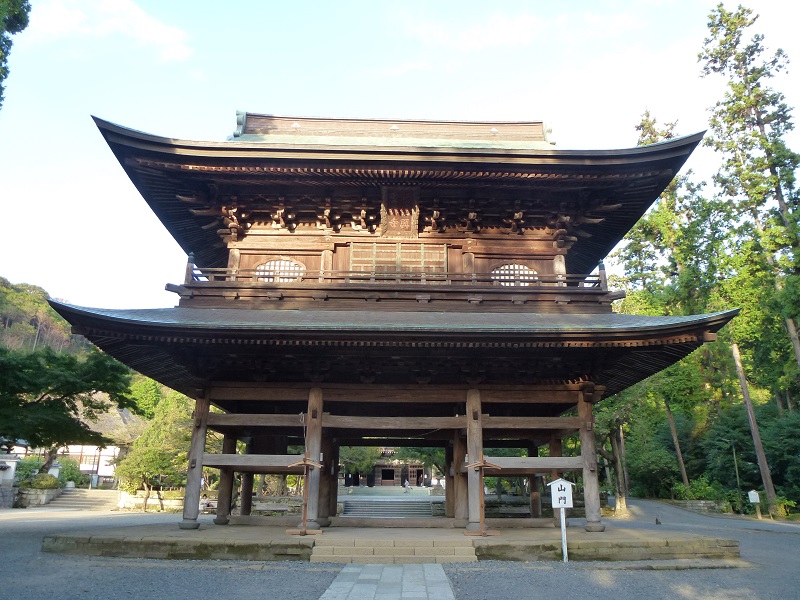
Photo by Japanforeveryone.com
Practical information
| Visualizzare la posizione su Google Maps | |
| Official website |
|
| 8:00-16:30 (until 16:00 from December to February) | |
| No closing days | |
| 300 Yen | |
| 5 minutes’ walk from JR Kita-Kamakura station (the previous station in Kamakura coming from Tokyo) |
Kenchoji is one of the oldest and most important Zen temples in Kamakura. Founded in 1253, the temple is notable for its imposing structure and beautiful gardens. It is famous for housing the largest main hall (Hatto) in Japan, where monks gather to meditate and study. Visitors can admire the beautiful landscaped gardens, stone paths and bridges leading to different areas of the temple. Kenchoji offers a peaceful and spiritually rich atmosphere, making it a must-see for Zen Buddhist devotees and those seeking a break from the daily hustle and bustle.
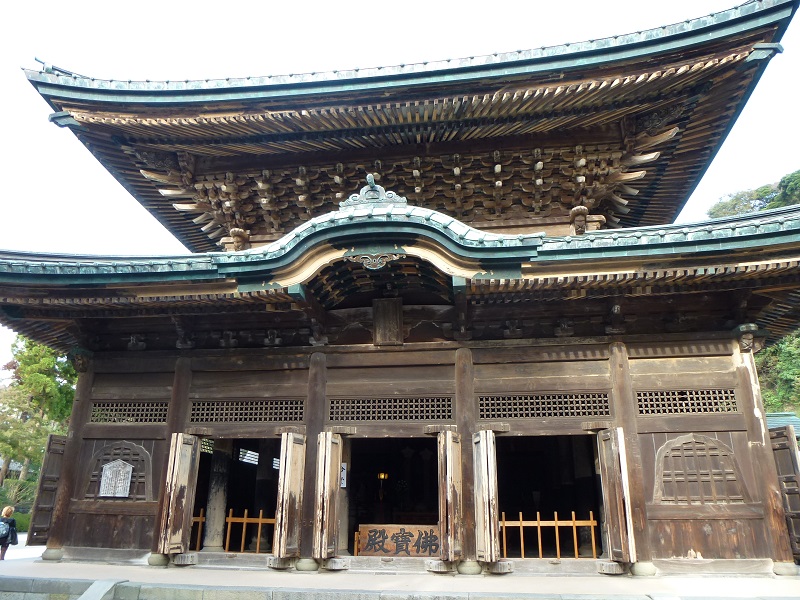
Photo by Japanforeveryone.com
Practical information
| View location on Google Maps | |
| Official website |
|
| 8:30-16:30 | |
| No closing days | |
| 500 Yen | |
| 20 minutes’ walk south-east from JR Kita-Kamakura station (the previous station in Kamakura coming from Tokyo) 15 minutes’ walk north of Tsuruoka Hachimangu Shrine 25 minutes’ walk north of JR Kamakura Station |
Zeniarai Benten is an enchanting shrine located in the city of Kamakura, Japan. This sacred place is famous for its unique feature: an underground cave where worshippers can wash their money for prosperity and luck. The shrine is dedicated to Benten, goddess of water, music and beauty. Visitors can participate in purification rituals by dipping their coins into running water. Surrounded by lush vegetation, Zeniarai Benten exudes a mystical tranquillity and is a unique experience for visitors seeking spiritual blessings and a connection with nature.
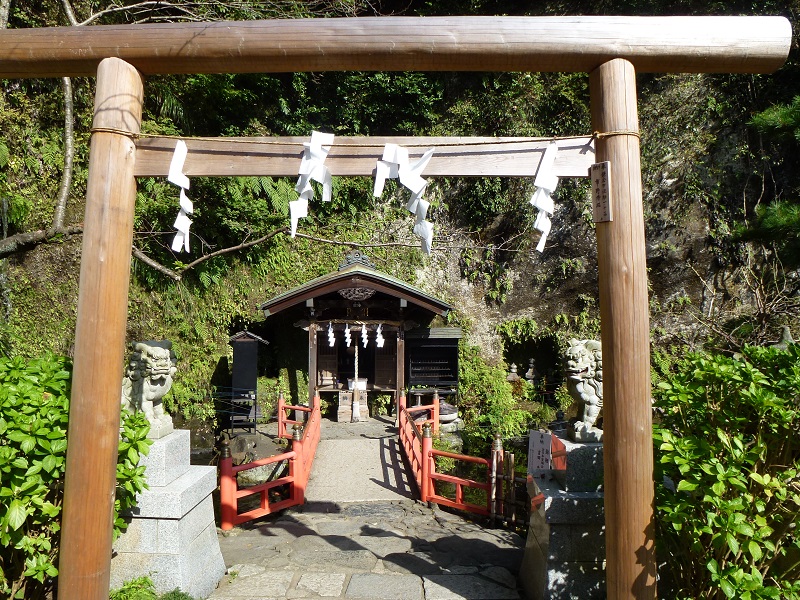
Photo by Japanforeveryone.com
Practical information
| View location on Google Maps | |
| Official page |
|
| 8:00-16:30 | |
| No closing days | |
| Free | |
| 20 minutes’ walk north-west of JR Kamakura Station 25 minutes’ walk south of JR Kita-Kamakura station The shrine is located on the Daibutsu Trail, which connects the Great Buddha to Kita-Kamakura Station |
Meigetsuin Temple is famous for its beautiful hydrangea garden, commonly known as Ajisai-dera. The garden is home to over 2,500 hydrangea plants, which flood the landscape with vibrant colours during the summer. The temple, founded in 1160, is also known as the Temple of the Clear Moon, and offers a calm and serene atmosphere that invites meditation. Visitors can admire the beauty of the carved stones, statues and sacred bells, and explore the various structures that make up the temple. Meigetsuin is a must-see for those who wish to have a unique experience immersed in the beauty of nature.
Tarourashima, Public domain, via Wikimedia Commons
Practical information
| View location on Google Maps | |
| Official page |
|
| 9:00-16:00 (8:30-17:00 in June) | |
| No closing days | |
| 500 Yen (additional 500 Yen for indoor gardens in June and Autumn) | |
| 10 minutes’ walk east of JR Kita-Kamakura station |
The Ankokuronji Temple, located in the city of Kamakura, Japan, is a Buddhist place of worship famous for its history and architecture. Founded in 1327, the temple is dedicated to various Buddhist gods and was built using local stone, wood and plaster. Visitors can admire the various structures of Ankokuronji, including the large bell tower, sacred statues and ancient frescoes. The temple is also known to be the place where the priest Nichiren, founder of the Nichiren Buddhist sect, preached for many years. Ankokuronji is an important historical and cultural site, perfect for those seeking a connection with the Japanese Buddhist tradition.
三人日, CC BY-SA 3.0, via Wikimedia Commons
Practical information
| View location on Google Maps | |
| Official page |
|
| 9:00-16:30 | |
| Monday (except national holidays) | |
| 100 Yen | |
| 25 minutes’ walk south-east of JR Kamakura station |
The Zuisenji temple, located in the city of Kamakura, Japan, is a hidden gem in the heart of nature. Founded in 1327, the temple is surrounded by bamboo forests and offers absolute tranquillity. Its traditional Japanese architecture, with its Zen gardens and picturesque ponds, is a sight for sore eyes. Visitors can also admire the calligraphic poetry and handicrafts inside its historic buildings. Zuisenji is an ideal place for those seeking a break from the hustle and bustle of the city and wishing to immerse themselves in the serene and spiritual beauty of ancient Japan.
Urashimataro, Public domain, via Wikimedia Commons
Practical information
| View location on Google Maps | |
| Official website |
|
| 9:00-17:00 Last entry 30 minutes before closing time |
|
| No closing days | |
| 200 Yen | |
| 40 minutes’ walk from JR Kamakura station. It can be reached by taking the Tenen path, which connects it to Kenchoji Temple in about 90 minutes From the station take bus 20 and get off at the Daitonomiya stop (8 minutes), from here it takes about 15 minutes on foot |
The Tokeiji Temple, located in the city of Kamakura, Japan, is known for its history as a women’s temple, dating back to the 14th century. Founded by a Buddhist nun and her pupil, the temple functioned as a refuge for women seeking to escape abusive or unhappy marriages. Its traditional wooden architecture, ancient bells and sacred statues create an atmosphere of peace and serenity. The Tokeiji Temple is an important historical and cultural site, not only for its architecture, but also for its legacy of helping women in distress during the ancient Japanese period.
Tarourashima, Public domain, via Wikimedia Commons
Practical information
| View location on Google Maps | |
| Official website |
|
| 8:30-16:30 (until 16:00 from October to March) | |
| No closing days | |
| 200 Yen | |
| 5 minutes’ walk south of JR Kita-Kamakura station |
The Myohonji Temple, located in the city of Kamakura, Japan, is an important Buddhist religious centre founded in the 14th century. Also known as Nichiren Temple, it is a sacred place dedicated to the teachings of the Buddhist priest Nichiren Daishonin. The temple is characterised by its traditional Japanese architecture, with pagoda roofs and a large main hall housing sacred statues and objects of veneration. Myohonji Temple is a place of meditation and prayer for the faithful, as well as a tourist attraction for those wishing to explore the history and spirituality of Japanese Buddhism.
三人日, CC BY-SA 3.0, via Wikimedia Commons
Practical information
| View location on Google Maps | |
| Official website |
|
| 9:00-17:00 | |
| No closing days | |
| Free | |
| 10 minutes’ walk east from JR Kamakura Station |
The Jochijii Temple is a Zen Buddhist place of worship founded in the 14th century. Its traditional Japanese architecture with Zen gardens and autumn trees offer spectacular views and it is one of the main meditation sites in the area. The Jochijii temple is a popular tourist attraction, especially for those seeking a break from the stresses of modern life. Its ancient architecture and serene, balanced atmosphere make it an ideal place for meditation and contemplation.
Tarourashima, Public domain, via Wikimedia Commons
Practical information
| View location on Google Maps | |
| Official website |
|
| 9:00-16:30 | |
| No closing days | |
| 200 Yen | |
| 10 minutes’ walk south of JR Kita-Kamakura station |
Jomyoji Temple is a Buddhist temple founded in 1188. Its architecture, characterised by a beautiful Zen garden, is well known for the beauty of its autumn foliage. The temple’s serene atmosphere and the elegance of its traditional buildings provide a mystical experience for visitors. Inside, there are many objects of veneration such as Buddha statues and ancient textbooks. Jomyoji Temple is an ideal place for those seeking a break from the hustle and bustle of everyday life and who want to enjoy the harmony and beauty of nature.
KimonBerlin, CC BY-SA 2.0, via Wikimedia Commons
Practical information
| View location on Google Maps | |
| 9:00-16:30 | |
| No closing days | |
| 100 Yen | |
| 30 minutes’ walk east of JR Kamakura station |
Jufukuji Temple is an ancient and respected Zen institution inaugurated in 1200 by Minamoto no Yoriie. Fascinated by its main ‘Sanmon’ gateway, a national rarity, Jufukuji offers serene walks among bamboo trees and tranquil gardens. As the third oldest temple in Kamakura, it exudes an atmosphere of peace and spirituality that invites reflection. Although the main hall is not open to the public, visitors can still immerse themselves in the contemplative atmosphere of the place. Jufukuji, with its green paths and rich history, is a must for visitors to the historic city of Kamakura.
Tarourashima, Public domain, via Wikimedia Commons
Practical information
| View location on Google Maps | |
| Official page |
|
| Always open | |
| No closing days | |
| Free | |
| 10 minutes’ walk north of JR Kamakura station |


